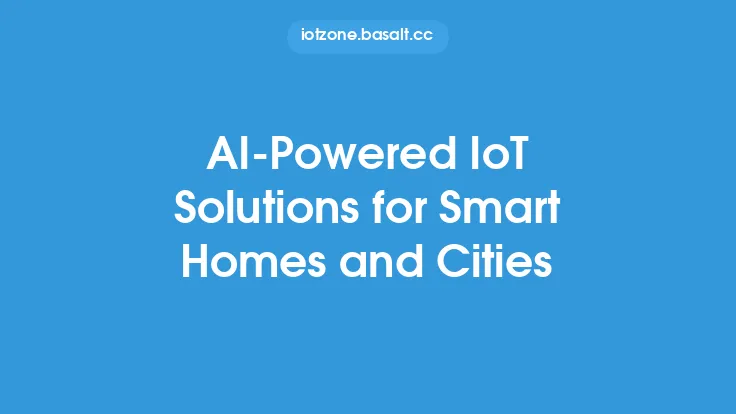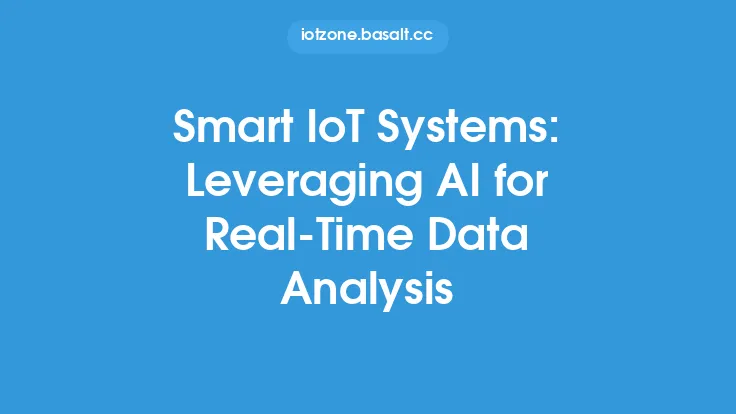The concept of smart campuses has been gaining traction in recent years, as educational institutions seek to leverage the power of the Internet of Things (IoT) to create more efficient, sustainable, and student-centric environments. By integrating IoT technologies into facility management and student experience, universities and colleges can improve operational efficiency, reduce costs, and enhance the overall quality of life for students, faculty, and staff. In this article, we will explore the various ways in which IoT is being used to create smart campuses, and examine the benefits and challenges associated with these initiatives.
Introduction to Smart Campus Technologies
Smart campus technologies encompass a wide range of IoT-enabled solutions, including energy management systems, building automation, surveillance and security systems, transportation management, and waste management. These technologies are designed to collect and analyze data from various sources, such as sensors, cameras, and other devices, to optimize campus operations and improve the student experience. Some of the key technologies used in smart campus initiatives include wireless sensor networks, IoT platforms, data analytics software, and cloud computing. By leveraging these technologies, educational institutions can create a more connected, efficient, and sustainable campus environment.
Energy Management and Sustainability
One of the primary applications of IoT in smart campus initiatives is energy management and sustainability. By installing sensors and meters to monitor energy usage, universities and colleges can identify areas of inefficiency and implement strategies to reduce energy consumption. For example, IoT-enabled lighting systems can be programmed to turn off lights in unoccupied buildings or adjust lighting levels based on natural light availability. Similarly, IoT-enabled HVAC systems can optimize heating and cooling based on occupancy schedules and outdoor weather conditions. By reducing energy consumption, educational institutions can lower their utility bills, minimize their carbon footprint, and create a more sustainable campus environment.
Facility Management and Maintenance
IoT technologies are also being used to improve facility management and maintenance on smart campuses. By installing sensors and monitoring systems, universities and colleges can detect potential maintenance issues before they become major problems. For example, IoT-enabled sensors can monitor equipment performance, detect leaks, and track temperature and humidity levels. This allows facility managers to schedule maintenance and repairs more effectively, reducing downtime and extending the lifespan of equipment. Additionally, IoT-enabled facility management systems can provide real-time data on space utilization, allowing universities and colleges to optimize room assignments and reduce energy consumption.
Student Experience and Engagement
Smart campus initiatives are not just about improving operational efficiency; they are also about enhancing the student experience. By providing students with mobile apps and digital platforms, universities and colleges can offer a range of services and amenities that make campus life more convenient and engaging. For example, IoT-enabled wayfinding systems can help students navigate campus, while IoT-enabled parking systems can guide students to available parking spots. Additionally, IoT-enabled student engagement platforms can provide students with real-time information on campus events, activities, and services, helping to foster a sense of community and connection.
Data Analytics and Insights
One of the key benefits of smart campus initiatives is the ability to collect and analyze data from various sources. By leveraging data analytics software and IoT platforms, universities and colleges can gain valuable insights into campus operations, student behavior, and facility performance. This data can be used to inform decision-making, optimize resources, and improve the overall quality of life on campus. For example, data analytics can help universities and colleges identify areas of high energy consumption, optimize space utilization, and improve student engagement and retention.
Security and Safety
Smart campus initiatives also have a critical role to play in ensuring student safety and security. By installing IoT-enabled surveillance systems, universities and colleges can monitor campus activity in real-time, respond quickly to incidents, and prevent potential threats. Additionally, IoT-enabled emergency response systems can provide students with critical information and support during emergency situations. For example, IoT-enabled panic buttons can alert security personnel to potential threats, while IoT-enabled emergency beacons can provide students with location-based information and support.
Challenges and Limitations
While smart campus initiatives offer many benefits, they also pose several challenges and limitations. One of the primary challenges is the need for significant investment in IoT infrastructure, including sensors, devices, and data analytics software. Additionally, smart campus initiatives require significant planning, coordination, and collaboration among various stakeholders, including faculty, staff, students, and external partners. Furthermore, there are also concerns about data privacy and security, as well as the potential for IoT systems to be hacked or compromised.
Best Practices and Recommendations
To overcome the challenges and limitations associated with smart campus initiatives, universities and colleges should follow several best practices and recommendations. First, they should develop a clear vision and strategy for their smart campus initiative, including specific goals, objectives, and metrics for success. Second, they should invest in IoT infrastructure and data analytics software that can support their smart campus goals. Third, they should establish a cross-functional team to oversee the smart campus initiative, including representatives from faculty, staff, students, and external partners. Finally, they should prioritize data privacy and security, ensuring that all IoT systems and data are properly secured and protected.
Conclusion
In conclusion, smart campus initiatives offer a wide range of benefits for educational institutions, including improved operational efficiency, enhanced student experience, and increased sustainability. By leveraging IoT technologies, universities and colleges can create a more connected, efficient, and student-centric environment that supports the needs of all stakeholders. While there are challenges and limitations associated with smart campus initiatives, these can be overcome by following best practices and recommendations, investing in IoT infrastructure and data analytics software, and prioritizing data privacy and security. As the IoT continues to evolve and mature, we can expect to see even more innovative and effective smart campus initiatives in the future.





